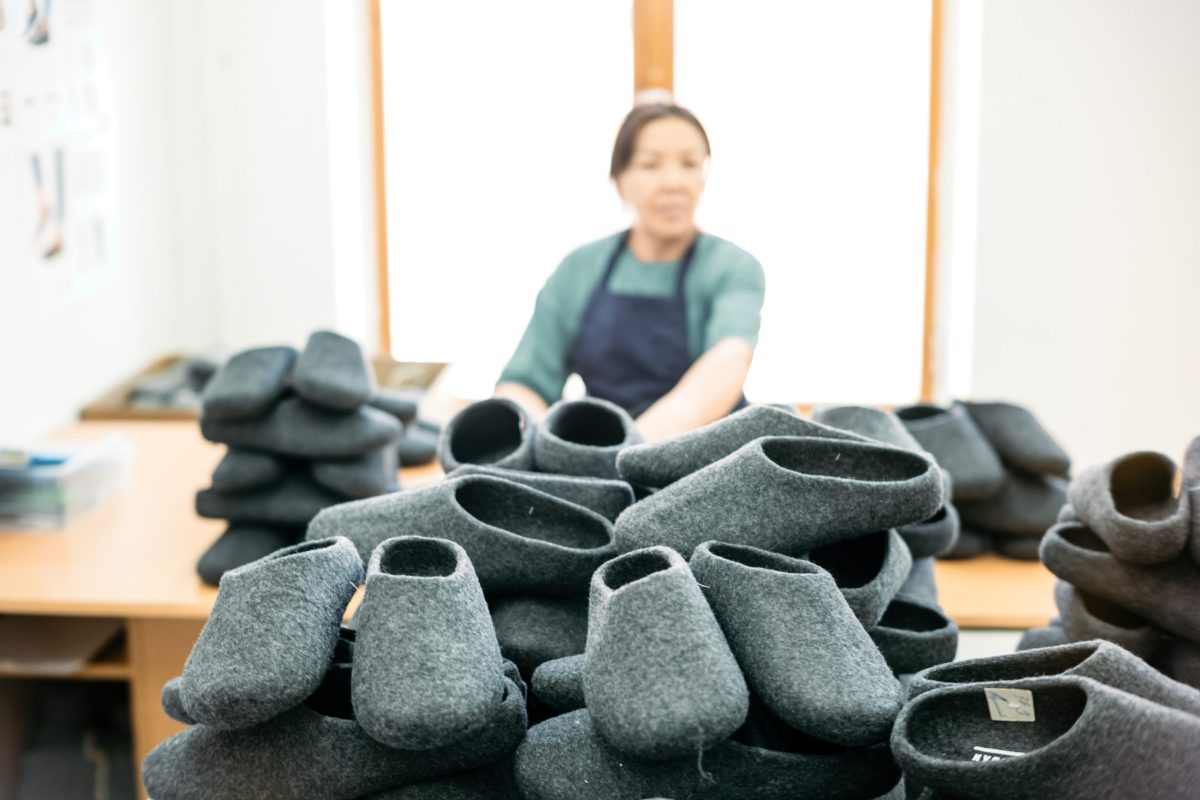[ad_1]
According to Chinara Makashova, founder of the Tumar felting collective, there’s an idiom in Kyrgyzstan that Kyrgyz are born on the felt and die on the felt. As historically nomadic sheep-herding people, Kyrgyz have deep traditions connected to wool and felt which have been maintained in today’s modernized world. But the involved, thoughtful and almost sacred practice of felting (typically passed from mother to daughter) was almost lost forever during Soviet rule in the country. Thankfully, it survived by virtue of Kyrgyz women, and felting continues to be practiced in traditional and contemporary ways (from making yurts to clothing, rugs and other household items) across the vibrant Central Asian nation.

This past summer we had the opportunity to visit Kyrgyzstan to experience some of its culture through the lens of felt. Our host was Kyrgies, a US-based felt slipper brand that works exclusively with Tumar (the women-led collective founded by Makashova in 1997) which is known to produce the best felt in the region. Our journey traced the manufacturing process from mulesed-free sheep to slippers—staying in mountain yurts near the Issyk-Kul lake in Eastern Kyrgyzstan, seeing the shearing process and visiting factories in the capital of Bishkek—to learn the many different ways that wool can be formed into felt, and how important the tradition is to the people of Kyrgyzstan.

Felt slippers might seem like a simple item but there’s nuance, craft and care throughout the manufacturing process, with history, culture and tradition pressed into the material. Steven Anderson and Barclay Saul, the founders of Kyrgies, immediately recognized this when they came across Tumar in 2018 and they set out to introduce the joy of the product and narrative of felt to North America.

The process of making felt involves cleaning, dyeing (sometimes), matting, condensing and pressing the wool using heat, moisture and agitation. This process creates a dense, durable material that’s both well-suited for the harsh Central Asian climate and comfy for home use. Historically this was done by hand and in smaller batches, but Tumar has industrialized felting without compromising the tradition or material.

It all begins with the sheep grazing in pastures 5000+ feet above sea level in the Northern Tian Shan mountains. Their wool is shorn (without the painful mulesing technique) in the fall and is delivered to the Bishek factory where craftspeople clean and categorize it to separate and align the fibers. If different colors are desired, the wool is also dyed during this step.

Next, artisans lay the wool out in thin layers and dampen it with water. Typically, this is done using a specialized tool called a “matt” which is used to press and roll the fibers together repeatedly, until they start to mat together and form a dense, cohesive fabric. Once the desired thickness is achieved, the felt is then “fulled” by further matting using hot water and soap, which helps to shrink and tighten the fibers even more.

The last step is shaping and finishing the final product. For Kyrgies, shaping is an elaborate ordeal that requires manipulating a flat sheet of felt around a mold to eventually render a 3D form—their familiar round-toe slipper shape.

Available online and through select stores, Kyrgies come in a range of styles designed for different uses. Since returning home from Kyrgyzstan, we have found their Classic Wool Slipper has become a house favorite. Worn almost daily for the last eight months, they’re as comfortable and intact as when they were brand new. While wearing wool slippers in the winter to keep feet warm makes sense, they also happen to be comfortable and cooling in warmer weather as well. This simple pleasure is made all the more special when considering the culture, craft and history embedded in them—and the artisans who preserved the tradition.
Images by Josh Rubin
[ad_2]
Source link https://coolhunting.com/style/learning-about-felt-in-kyrgyzstan/

Leave a Reply
You must be logged in to post a comment.